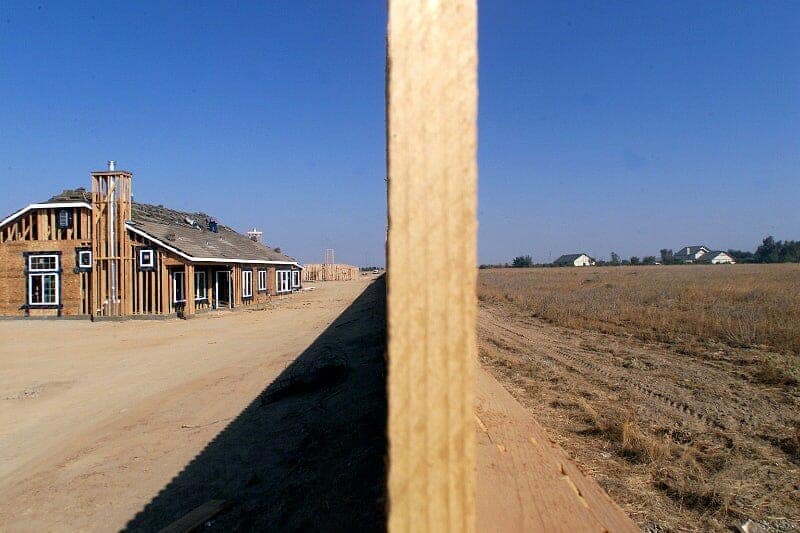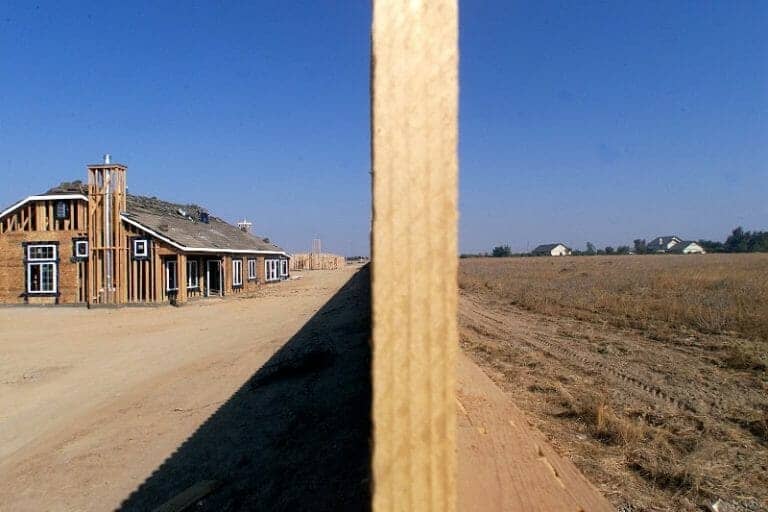The state’s Sustainable Groundwater Management Act is likely to result in fallowing thousands of acres of farmland. Local governments are just waking up to the big opportunities, and risks, in how that land gets reused.
New housing construction in California’s San Joaquin Valley poses a threat to some of the best groundwater recharge lands.
California’s new groundwater management law is not a sports car. It moves more like a wagon train. The rules do not require critically overdrafted aquifers to achieve “sustainability” until 2040. But 22 years from now, once they finally get there, lives will be transformed.
The Sustainable Groundwater Management Act (SGMA), adopted in 2014, will change more than groundwater. The requirement to end overdraft will also transform land use, a massive side effect yet to be widely recognized. Parts of California will literally look different once the law takes full effect. It could put some farmers out of business. It could change how others farm. In some areas, farms will have to be fallowed to reduce groundwater demand.
That idled farmland will have lots of important new uses. Some could become wildlife habitat or groundwater recharge basins. Others could be useful for solar energy development and […]
Full article: California Groundwater Law Means Big Changes Above Ground, Too
About the Sustainable Groundwater Management Act and its impacts:
New Estimate Finds Less Fresh Groundwater in U.S. Than Previously Assumed
California’s Groundwater Rule Could Mean Opportunities, Not Penalties
More Resources for Water Quality Data
California’s water policy at potential tipping point



